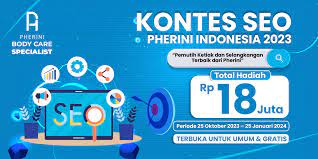In a world where digitalization is rapidly transforming every کتاب آن سوی مرگ رایگان aspect of our daily lives, the traditional book industry has also undergone significant changes. Among the most innovative developments in recent years is the emergence of the concept Book Beyond—a movement that goes beyond the printed page, encouraging readers to explore new ways of experiencing literature and learning.
The Rise of “Book Beyond”
The term “Book Beyond” is not limited to just a specific genre or format; rather, it represents an evolving philosophy around the experience of reading. While books themselves remain a central part of this concept, Book Beyond seeks to push the boundaries of what a book can be. It’s about integrating technology, interactivity, and immersive experiences into the world of literature. Think of it as a bridge between the physical and the digital, where a simple book transforms into an expansive platform for creativity, learning, and engagement.
At its core, Book Beyond invites readers to venture into new ways of experiencing stories and knowledge—through augmented reality (AR), virtual reality (VR), multimedia content, and even crowd-sourced contributions. The boundaries that traditionally separated books from other forms of media are now blurred, creating a seamless integration that enhances both education and entertainment.
Exploring New Frontiers in Storytelling
Traditionally, the experience of reading a book has been a solitary endeavor, involving the turning of pages or scrolling through e-books on a screen. However, the introduction of interactive features has revolutionized this experience. Book Beyond includes the rise of interactive storytelling, where readers can not only follow a narrative but actively shape it. By making choices, unlocking content, or engaging with multimedia elements like videos and soundtracks, readers can create a personalized reading experience.
One example is the rise of “choose-your-own-adventure” books, which have evolved into digital formats where readers can make decisions that influence the direction of the story. With advancements in AR and VR, even more immersive experiences are emerging. Imagine reading a fantasy novel where you can explore the world described in the pages, interacting with characters and environments in real time. The ability to step into a fictional universe, rather than just reading about it, is transforming storytelling into an experience that goes beyond imagination.
Revolutionizing Education
One of the most significant applications of Book Beyond is in the field of education. While textbooks have traditionally been a dry, one-dimensional source of knowledge, the integration of multimedia elements and digital technologies is making them more dynamic and engaging. By incorporating interactive diagrams, 3D models, videos, and quizzes into educational texts, learning becomes an immersive and participatory experience rather than a passive one.
Moreover, Book Beyond also embraces adaptive learning technologies, where educational content can adjust in real-time to the learner’s needs. If a student struggles with a particular concept, the digital platform can offer additional resources, exercises, and explanations tailored to their level of understanding. This personalized learning experience makes education more effective, allowing learners to progress at their own pace and with a deeper understanding of the material.
The Impact of Augmented Reality and Virtual Reality
Augmented and virtual reality are key components in the Book Beyond evolution, especially in fields like history, science, and literature. Imagine opening a history book and seeing a holographic recreation of ancient civilizations right in front of you, or using VR to visit the setting of a novel you’re reading. These technologies allow the reader to experience books in ways that were previously unimaginable.
For instance, a biology student might interact with a 3D model of a human cell, exploring its structure and function in an interactive and visually stimulating way. In literature, readers can engage with characters, setting, and plot in a manner that brings the text to life. These technologies engage multiple senses, making learning more memorable and impactful.
The Future of Book Beyond
As technology continues to evolve, the possibilities for Book Beyond seem limitless. Artificial intelligence (AI) may play an increasingly important role, with systems that can recommend reading materials based on personal preferences and learning styles. Additionally, social features that enable readers to share thoughts, discuss interpretations, and collaborate on projects will further enrich the community aspect of reading.
Another exciting development is the potential for crowdsourced books—a concept where multiple contributors can add their ideas, stories, and perspectives to an ever-evolving text. Imagine an open-source novel, constantly being shaped by readers from around the world, or textbooks that update with new information in real-time based on the latest research and discoveries. This is a new frontier in collaborative learning and storytelling.
Conclusion: A New Era for Books
Book Beyond represents a dynamic and transformative shift in how we approach reading and learning. With technology enhancing traditional books and breaking the boundaries between mediums, readers now have the opportunity to immerse themselves in narratives and knowledge in ways that were once the realm of science fiction. Whether it’s a novel with interactive elements, a textbook that adapts to your learning style, or a VR experience based on a book’s world, Book Beyond is pushing the boundaries of what books can be—and in doing so, it is creating an entirely new era for storytelling and education.

